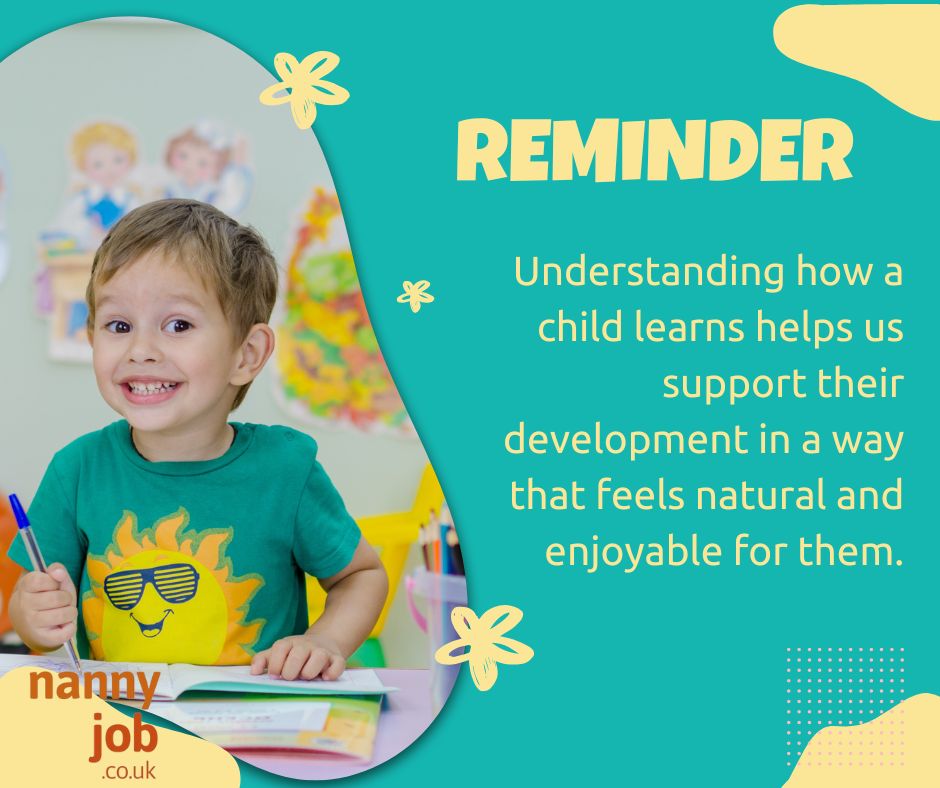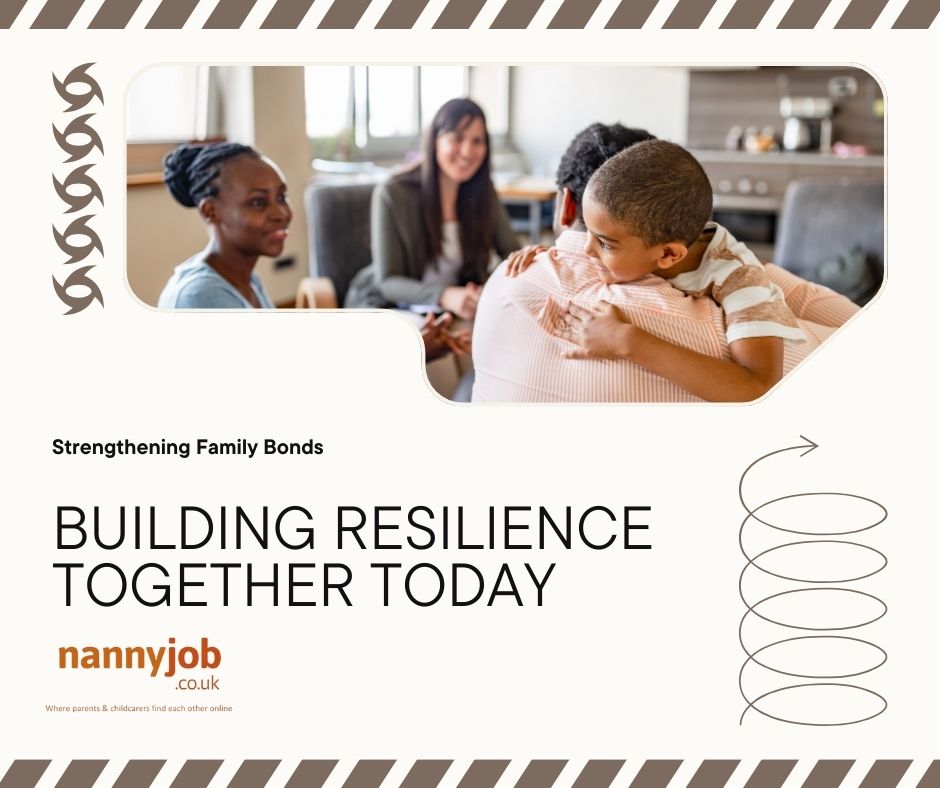Being a nanny is a rewarding yet challenging role that goes far beyond the basics of childcare. While your CV might highlight your experience and qualifications, there are many other essential skills that make a nanny exceptional. From emotional intelligence to adaptability, these qualities are the backbone of providing top-notch care for children and supporting families. If you’re considering a career as a nanny or want to refine your skills, here’s what you need to thrive in this unique and impactful profession.
Being a nanny is a rewarding yet challenging role that goes far beyond the basics of childcare. While your CV might highlight your experience and qualifications, there are many other essential skills that make a nanny exceptional. From emotional intelligence to adaptability, these qualities are the backbone of providing top-notch care for children and supporting families. If you’re considering a career as a nanny or want to refine your skills, here’s what you need to thrive in this unique and impactful profession.
Essential Skills and Qualities Every Nanny Needs
1. Emotional Intelligence
Understanding and managing emotions—both yours and the children’s—is at the heart of nannying. Emotional intelligence helps you:
- Recognise and respond to a child’s feelings with empathy and patience.
- Navigate challenging moments, like tantrums or sibling conflicts, calmly and effectively.
- Build trust and strong emotional bonds with the children and their family.
How to Develop It: Practice active listening and mindfulness to improve your emotional awareness and response.
2. Adaptability
No two days as a nanny are the same, and flexibility is key. From sudden schedule changes to unexpected challenges, nannies must:
- Quickly adjust plans without becoming flustered.
- Handle unpredictable situations, like a sick child or last-minute errands, with ease.
- Tailor activities and routines to the unique needs of each child.
Tip: Stay open-minded and solution-focused when faced with change.
3. Communication Skills
Clear and open communication is vital in your role as a nanny. It ensures you:
- Effectively collaborate with parents about routines, expectations, and updates.
- Explain tasks or rules to children in a way they understand and respect.
- Provide honest feedback or address concerns with professionalism and care.
Pro Tip: Keep a daily log for parents, noting meals, naps, and activities, to foster transparency and trust.
4. Problem-Solving Abilities
Children are unpredictable, and quick thinking is often required. Problem-solving skills help you:
- Resolve minor conflicts, like disputes over toys, with fairness and creativity.
- Handle emergencies, such as an injury or illness, calmly and effectively.
- Adjust activities if something isn’t working, ensuring children stay engaged and happy.
How to Improve: Stay calm under pressure and think about solutions before reacting.
5. Creativity and Playfulness
Children thrive on play, and a creative nanny can turn everyday moments into magical ones. Creativity allows you to:
- Invent fun, educational activities that align with a child’s interests.
- Encourage imagination through crafts, storytelling, or role-play.
- Make routine tasks, like tidying up or brushing teeth, enjoyable and engaging.
Example: Turn a rainy day into an indoor treasure hunt or a DIY craft session.
6. Patience
Working with children requires a deep well of patience. It helps you:
- Stay calm during tantrums, tears, or slow mornings.
- Allow children to learn and grow at their own pace.
- Maintain positivity, even on days when things don’t go as planned.
Mindset Tip: Remember that patience isn’t about tolerating—it’s about understanding and supporting.
7. Organisation and Time Management
As a nanny, juggling multiple responsibilities is part of the job. Strong organization ensures you can:
- Maintain consistent schedules for meals, naps, and activities.
- Keep track of school runs, appointments, and extracurriculars.
- Manage household tasks, like tidying or meal prep, efficiently.
Practical Tip: Use apps or planners to keep track of the family’s schedule and your own responsibilities.
8. Cultural Sensitivity and Respect
Families come from diverse backgrounds, and nannies must:
- Respect and adapt to the family’s cultural practices, parenting styles, and values.
- Be open to learning about new traditions or customs.
- Teach children about inclusivity and respect through your own behavior.
Key Reminder: Always communicate with parents about their preferences and expectations.
Beyond Skills – The Right Attitude
While skills are essential, your attitude can set you apart as a nanny. Families look for caregivers who bring warmth, positivity, and dedication to their role.
- Empathy: Truly care about the children’s well-being and happiness.
- Dependability: Be punctual, trustworthy, and consistent in your care.
- A Love for Children: Enjoy spending time with kids and watching them grow and learn.
Qualifications and Training
Of course, certain qualifications are necessary to build a strong foundation:
- Childcare Certification: Basic training in childcare principles and development.
- First Aid and CPR Training: Essential for handling emergencies.
- Specialised Skills: Knowledge of cooking, languages, or tutoring can be a bonus for many families.
How Nannies Support Families Beyond Childcare
Nannies are more than caregivers—they’re an integral part of a family’s support system. You’ll:
- Provide emotional reassurance to parents, knowing their children are in capable hands.
- Create a nurturing environment where children feel safe and valued.
- Help families navigate daily life with less stress, offering peace of mind and practical support.
Conclusion
Being a nanny is a multi-faceted role that requires much more than childcare qualifications. Emotional intelligence, adaptability, creativity, and strong communication skills are just a few of the qualities that set exceptional nannies apart. If you’re passionate about making a difference in children’s lives and supporting families, developing these skills and embracing a positive attitude will ensure your success.
Remember: being a great nanny isn’t just about what’s on your CV—it’s about who you are and how you show up every day for the children and families you care for. 















































 Kensington Gardens, London
Kensington Gardens, London Manchester – Heaton Park Adventure Playground
Manchester – Heaton Park Adventure Playground Bristol – Blaise Castle Estate Playground
Bristol – Blaise Castle Estate Playground Birmingham – Lickey Hills Country Park
Birmingham – Lickey Hills Country Park Cardiff – Roath Park Playground & Lake
Cardiff – Roath Park Playground & Lake Encourages Physical Activity
Encourages Physical Activity Boosts Imagination & Creativity
Boosts Imagination & Creativity Supports Mental Well-being
Supports Mental Well-being Connects Kids with Nature
Connects Kids with Nature Dress for the Weather: UK weather can be unpredictable—bring waterproofs, extra layers, and comfy shoes!
Dress for the Weather: UK weather can be unpredictable—bring waterproofs, extra layers, and comfy shoes!
 2. Auditory Learners – Learning Through Listening
2. Auditory Learners – Learning Through Listening 3. Kinaesthetic Learners – Learning Through Doing
3. Kinaesthetic Learners – Learning Through Doing Observe the Child’s Natural Interests
Observe the Child’s Natural Interests Adapt Daily Routines to Support Learning
Adapt Daily Routines to Support Learning
 2. Social and Emotional Growth – Learning to Interact
2. Social and Emotional Growth – Learning to Interact Sensory Play
Sensory Play Role Play & Imaginative Play
Role Play & Imaginative Play Building & Problem-Solving Games
Building & Problem-Solving Games Limit Screen Time: Encourage hands-on, active play rather than passive entertainment.
Limit Screen Time: Encourage hands-on, active play rather than passive entertainment. Join In! Engaging in play with children strengthens relationships and provides valuable learning experiences.
Join In! Engaging in play with children strengthens relationships and provides valuable learning experiences.






